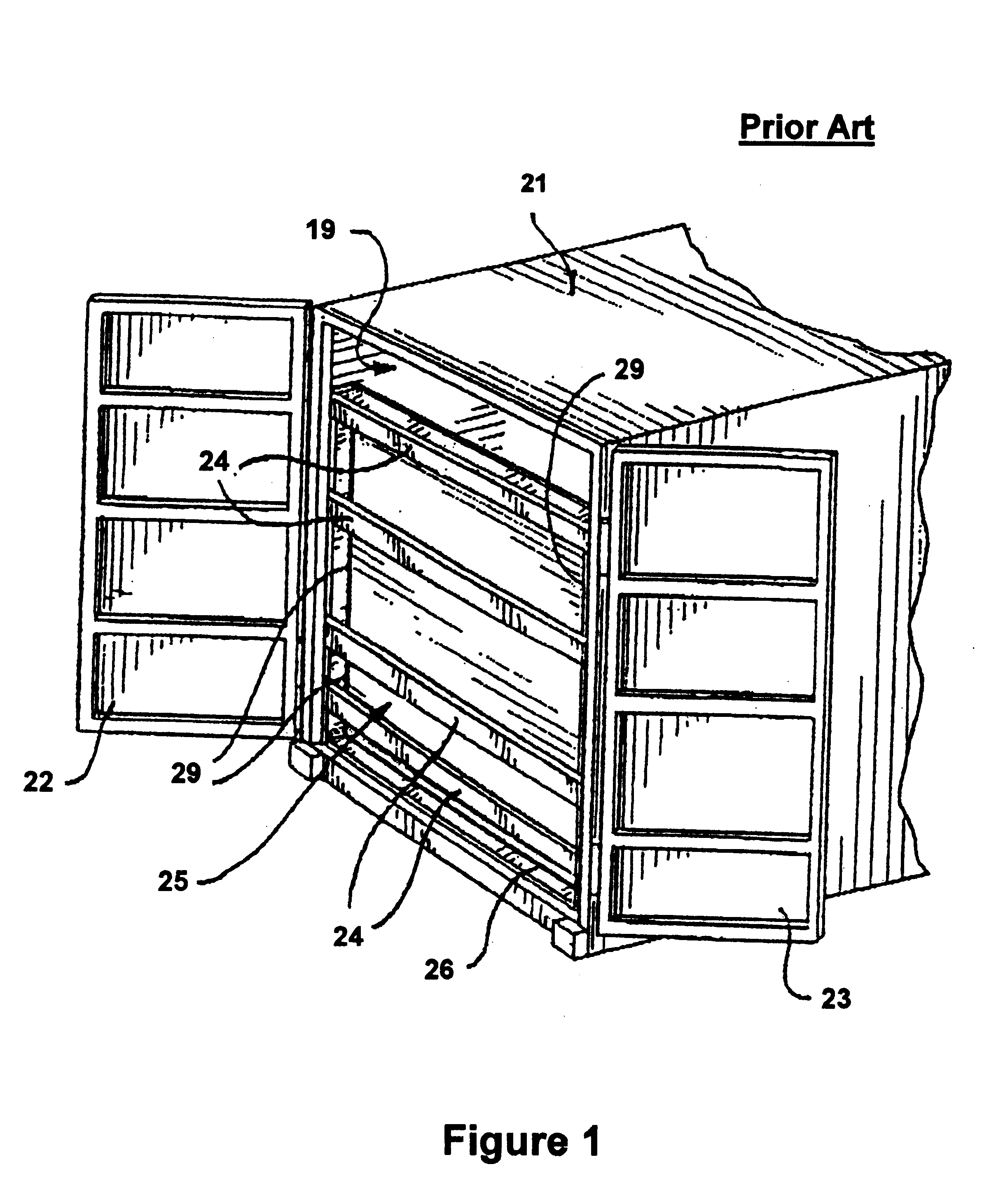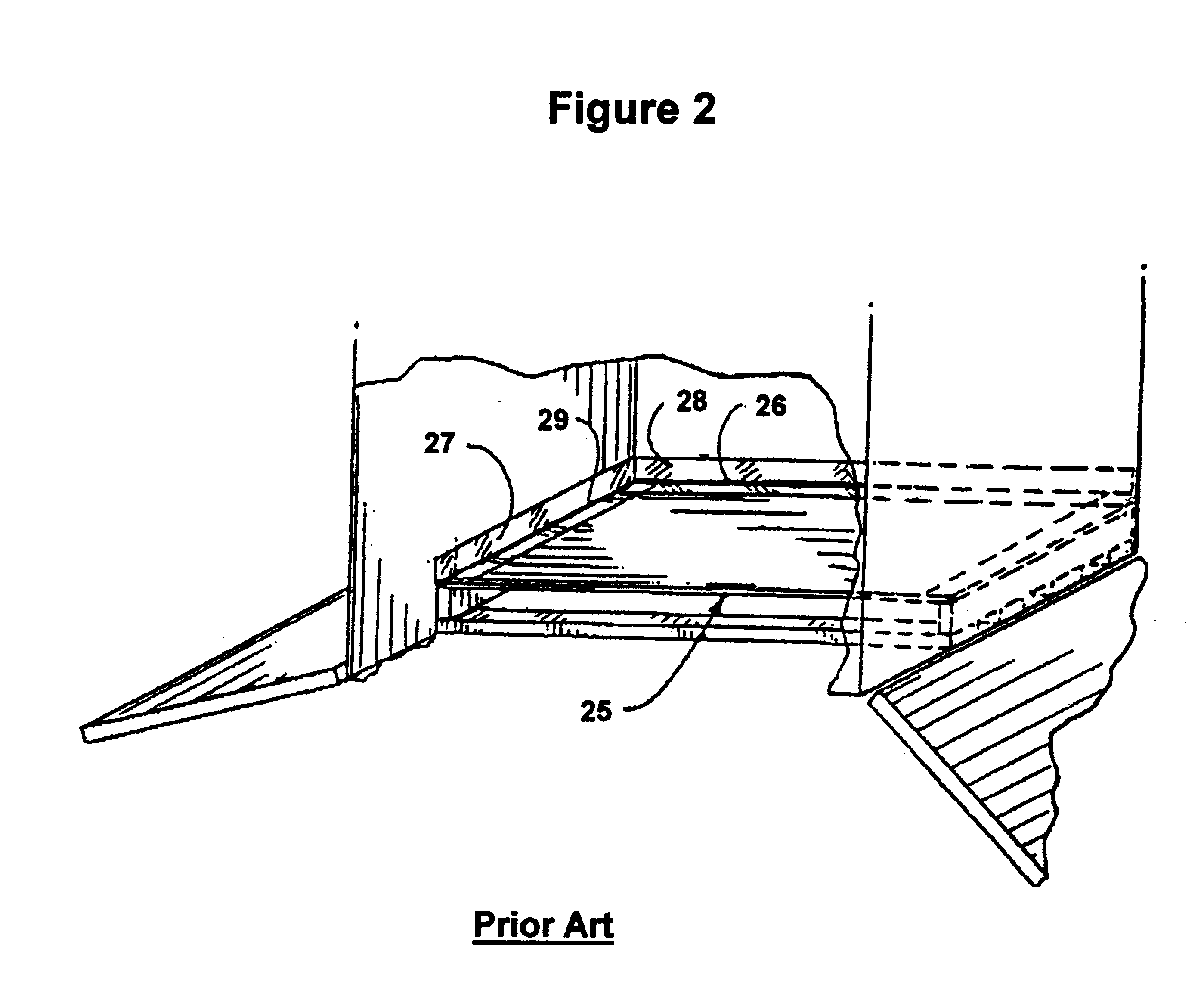Bulkhead for retaining a cargo in a container
- Summary
- Abstract
- Description
- Claims
- Application Information
AI Technical Summary
Benefits of technology
Problems solved by technology
Method used
Image
Examples
Embodiment Construction
FIG. 3 depicts the preferred embodiment of the present invention. Cargo container 31, a standard ISO cargo container of anywhere from 20 to 40 feet long and generally 8 feet wide and 8 to 9 feet high, has a floor 47, a right side wall 48, a left side wall 46, a top 49, and a front wall 45. Such ISO containers are made out of aluminum, steel, or a combination of these and other materials, and have become standard in the shipping industry. The container also has a rear opening 50 with rear doors 32 and 33.
Bulkhead 30, located at the rear of the container 31, has a center wall section 35, a left side flap 37, a right side flap 39, and a lower flap 38. The bulkhead 30 of the present invention is made of a thin, light, flexible and semi-rigid material. The preferred material for making the bulkhead 30 is cardboard, in particular corrugated cardboard, with a double-walled or triple-walled thickness. Other potential materials are plastic of a sufficiently rigid but flexible construction, a...
PUM
 Login to View More
Login to View More Abstract
Description
Claims
Application Information
 Login to View More
Login to View More - R&D
- Intellectual Property
- Life Sciences
- Materials
- Tech Scout
- Unparalleled Data Quality
- Higher Quality Content
- 60% Fewer Hallucinations
Browse by: Latest US Patents, China's latest patents, Technical Efficacy Thesaurus, Application Domain, Technology Topic, Popular Technical Reports.
© 2025 PatSnap. All rights reserved.Legal|Privacy policy|Modern Slavery Act Transparency Statement|Sitemap|About US| Contact US: help@patsnap.com



